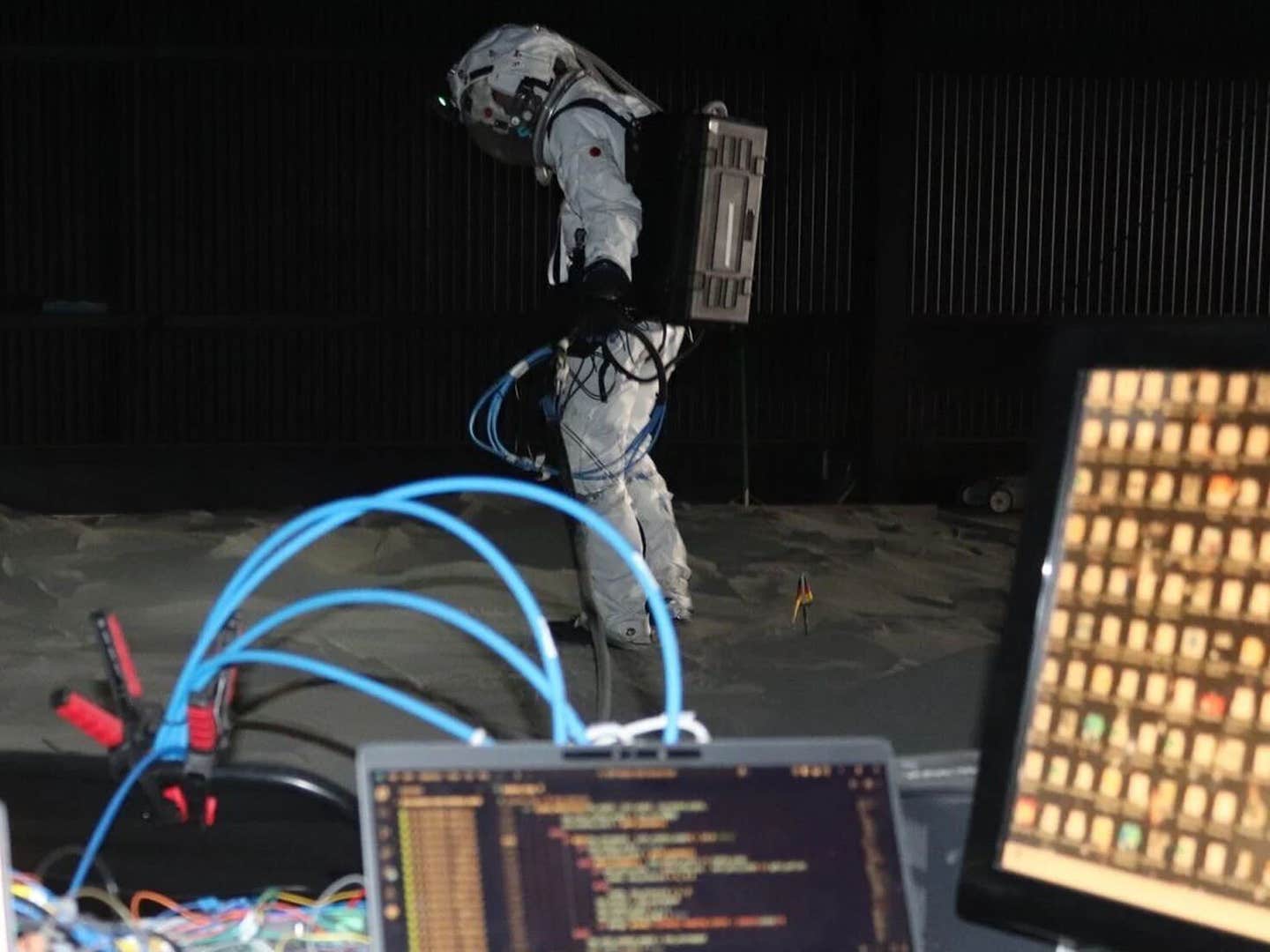300-year-old meteorite deepens our understanding of how heat moves through matter
A meteorite from 1724 reveals a rare material with steady thermal conductivity, promising cleaner tech and more efficient steel production.

Hybrid crystal-glass materials from a meteorite may help cut industrial emissions with steady heat conduction. (CREDIT: Shutterstock)
A meteorite that crashed in Germany almost 300 years ago is now helping scientists change how we understand heat. Carved from a meteorite that landed in Steinbach in 1724, a rare sample of silica, called tridymite, was recently found to defy what we thought we knew about how solids conduct heat.
Typically, materials behave in predictable ways. Crystals, with their neatly ordered atomic structures, become worse at conducting heat as temperature increases. Glasses, which have jumbled, disorderly structures, do the opposite—their ability to carry heat improves as they heat up.
But this piece of tridymite didn’t follow either rule. Instead, its ability to carry heat stayed almost perfectly steady across a wide range of temperatures. Scientists now believe this unique property might open doors to controlling heat in ways never before possible.
Bridging Crystals and Glasses
Heat flows through solids in two major ways. In crystals, heat moves like particles bouncing through an orderly grid of atoms. In glasses, heat flows more like waves tunneling randomly through a maze. These opposing behaviors mean that crystals and glasses usually react very differently to changes in temperature.
But tridymite from the Steinbach meteorite sits in a strange middle zone. It’s structured like a crystal but shaped more like a glass. This means both particle-like and wave-like heat transfer can happen at the same time. The opposing effects cancel each other out, allowing the heat to flow in a stable way that doesn’t shift as temperatures rise or fall—even below the Debye temperature, a quantum physics boundary where materials usually switch behaviors.
The researchers say this is the first time such constant thermal conductivity has been observed not just at high temperatures but also in the quantum regime, where particles behave more like waves. It’s a discovery that not only deepens our understanding of how heat moves through matter but also challenges long-standing beliefs.
Related Stories
- Scientists confirm long-theorized idea – discover metallic material displaying 1D magnetism
- New Nickel-Tungsten Alloy Powers Greener, Faster Memory Chips
- New biodegradable film keeps buildings cool without electricity
The Equation That Started It All
The journey toward this discovery began years ago. In 2019, Michele Simoncelli, then working with Nicola Marzari and Francesco Mauri, developed an equation that could explain how heat flows in both crystals and glasses. This mathematical tool was the first to unite both types of behavior into a single model.
With this equation, the team could explore how tiny differences in atomic structure—whether neat and regular or random and chaotic—affect how materials carry heat. They focused their work on silicon dioxide, a common substance found in sand, glass, and quartz. One specific form, called tridymite, caught their attention. It had been described in the 1960s as showing up in meteorites. Their calculations predicted it might behave as a hybrid material, with traits of both crystals and glasses.
Most importantly, they believed its thermal conductivity would not change with temperature. This rare property is similar to something called the "invar effect," where certain metals don’t expand as much when heated. That effect earned a Nobel Prize in Physics in 1920. If Simoncelli's prediction proved correct, it could signal a new class of materials with thermal properties just as extraordinary.
Testing a 300-Year-Old Meteorite
To test their prediction, Simoncelli and his team reached out to experts in France. Etienne Balan, Daniele Fournier, and Massimiliano Marangolo from Sorbonne University were given special access to the Steinbach meteorite, which is preserved in the National Museum of Natural History in Paris.
The team carefully carved out a piece of tridymite from the meteorite and began to test it. They found that its atomic structure did not fit cleanly into either the crystal or glass category. It had crystalline bonds but a geometry that looked almost glassy.
When they measured its thermal conductivity, the results were stunning—it barely changed at all from 80 to 380 Kelvin. That range stretches from colder than dry ice to hotter than boiling water, yet the material conducted heat almost identically throughout. This made it the first known solid to do so over such a wide temperature range.
Impacts Beyond the Lab
The discovery of stable thermal conductivity has more than academic value. It has real-world potential to reduce emissions and improve energy efficiency. One major example lies in the steel industry. Steel is everywhere, from cars to skyscrapers, but making it is a dirty process. Producing just one kilogram of steel releases around 1.3 kilograms of carbon dioxide. With nearly a billion tons made every year, that adds up to a massive carbon footprint—about 7% of total emissions in the United States alone.
The researchers found that this hybrid tridymite material isn’t just limited to meteorites. It can also form naturally over decades in the high-heat environments of steel furnace bricks. These bricks face extreme and constant heating, which can slowly rearrange their internal structure.
Over time, they begin to resemble the same hybrid crystal-glass structure seen in the meteorite. By using or even engineering materials with this stable thermal behavior, industries could better manage heat, reduce energy waste, and lower emissions. In other words, this ancient piece of space rock could help build a greener future.
Harnessing AI to Explore Quantum Materials
Simoncelli, now at Columbia University, is not stopping with heat alone. His research goes beyond just one material. By applying machine learning to quantum mechanics, his group is creating new ways to simulate how atoms behave. These simulations can predict how heat, electricity, and even magnetism travel through solids.
Traditional first-principles methods, which rely on solving complex quantum equations, are often too slow for large systems. But by using artificial intelligence, Simoncelli’s group can speed up this process without losing accuracy.
This AI-powered approach helps scientists look for materials that are perfect for tasks like converting heat into electricity, cooling electronics, or creating devices that mimic how the brain works. Some of these materials might even be used in new technologies like wearable sensors or spin-based computers, which process data with the magnetic spins of electrons instead of electrical charges.
Simoncelli’s lab is focusing on three key goals: building better theories to understand experiments, developing AI tools to make faster and more accurate predictions, and applying both to solve real industrial problems. Their work is part of a larger trend where science and engineering come together with powerful computer tools to design the future of materials from the atomic level up.
Rewriting the Rules of Heat
This research proves that hybrid crystal-glass materials aren’t limited to one type of temperature or system. From meteorites to industrial furnaces, their unique structure makes them valuable wherever heat must be managed precisely.
It also shows how materials with mixed atomic features—ordered bonds but disordered shapes—can unlock behaviors that neither crystals nor glasses can achieve on their own. Instead of thinking in black and white, scientists are starting to see a world of possibilities in the gray zone in between.
From improving furnace efficiency to designing better electronics, the future of thermal management might depend not on one extreme or the other, but on the strange, in-between world of hybrid materials.
Research findings are available online in the journal PNAS.
Note: The article above provided above by The Brighter Side of News.
Like these kind of feel good stories? Get The Brighter Side of News' newsletter.



